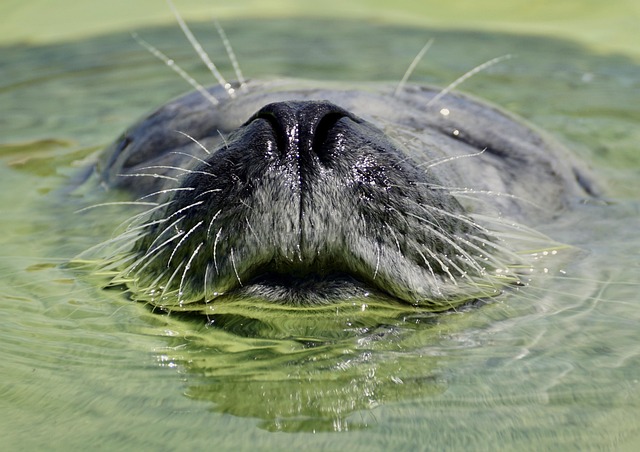Creating and maintaining large aquarium installations requires a deep understanding of ecosystem dynamics, catering to distinct needs of saltwater and freshwater species. These setups demand precise control over parameters like pH, temperature, salinity, and water circulation to mimic natural conditions. By mimicking these environments, aquarists can cultivate thriving communities, offering visitors an immersive experience of Earth's diverse aquatic ecosystems. Strict monitoring, regular water changes, and creating varied microhabitats ensure ecological balance in these extensive aquatic environments.
In the realm of large aquarium installations, understanding the intricate differences between saltwater and freshwater ecosystems is paramount. This article delves into the specific requirements these environments demand, highlighting key distinctions that cater to diverse exhibit needs. From tailored aquatic settings to best maintenance practices for balanced habitats, we explore strategies essential for creating vibrant marine and freshwater ecosystems within these grand scales. By considering these factors, aquariums can offer visitors an immersive experience while fostering the health of these delicate natural balances.
Understanding Ecosystem Requirements for Large Aquarium Installations
Creating and maintaining a large aquarium installation requires a deep understanding of ecosystem requirements. These complex environments house diverse species, each with unique needs regarding water quality, temperature, salinity, and habitat. For instance, saltwater aquariums necessitate precise control of parameters like pH levels, specific gravity, and temperature, which significantly differ from those required by freshwater ecosystems.
Proper functioning of large aquarium installations hinges on mimicking the natural conditions these organisms thrive in. This involves meticulous monitoring and regulation of filtration systems, water circulation, lighting, and nutritional inputs to ensure a balanced ecosystem. By understanding and catering to these requirements, aquarists can foster thriving communities within their tanks, showcasing the beauty and diversity of aquatic life.
Key Differences Between Saltwater and Freshwater Ecosystems
Saltwater and freshwater ecosystems, while both vital to our planet’s biodiversity, differ significantly in their composition and requirements. One of the most notable distinctions lies in the salinity levels—the amount of salt dissolved in water. Saltwater environments, characterized by high salt concentrations, support unique species adapted to these challenging conditions. In contrast, freshwater systems, like rivers and lakes, maintain relatively low salt content, fostering diverse habitats for numerous plant and animal life.
When considering large aquarium installations, understanding these differences is crucial. Saltwater aquariums necessitate specific equipment to maintain the delicate balance of salinity, including advanced filtration systems and regular water exchanges. In contrast, freshwater setups are generally simpler, focusing on maintaining optimal parameters like pH levels and temperature, ensuring a thriving ecosystem within the confines of the tank.
Tailoring Aquatic Environments to Specific Exhibit Needs
In the realm of large aquarium installations, the art of tailoring aquatic environments to specific exhibit needs is a delicate dance. Each ecosystem, whether saltwater or freshwater, possesses unique characteristics and challenges that demand meticulous consideration. For instance, creating a vibrant coral reef exhibit necessitates precise water temperature control, high light intensity, and specific chemical conditions to foster the growth of diverse coral species and their associated marine life.
Conversely, simulating a serene freshwater forest environment might require more subtle adjustments, focusing on natural filtration systems, controlled current flow, and the careful selection of plants and fish that thrive in such settings. This tailored approach not only ensures the well-being of the exhibited organisms but also captivates visitors by showcasing the remarkable diversity and complexity of our planet’s aquatic ecosystems.
Best Practices for Maintaining Balanced Marine and Freshwater Habitats
Maintaining balanced marine and freshwater habitats in large aquarium installations requires a meticulous approach, combining scientific understanding with dedicated care. One key practice is strict monitoring of water parameters, such as pH levels, salinity, and temperature, to ensure they remain within optimal ranges for the specific ecosystem. Regular water changes are also crucial, allowing for the removal of accumulated waste and maintaining water quality.
Additionally, creating diverse microhabitats within the large aquarium installations facilitates ecological balance. This involves providing varied environments like shallow areas, deep pools, and hidden corners, each supporting distinct species and behaviors. The strategic placement of plants, rocks, and decor enhances natural hiding spots and feeding grounds, promoting biodiversity and reducing competition for resources.
Large aquarium installations require a deep understanding of ecosystem requirements to create balanced marine and freshwater habitats. By recognizing the key differences between saltwater and freshwater ecosystems, we can tailor these environments to meet specific exhibit needs. Best practices for maintenance ensure these habitats thrive, providing visitors with vibrant, diverse, and healthy aquatic displays. When properly tailored, these ecosystems become true testaments to nature’s beauty and complexity.
